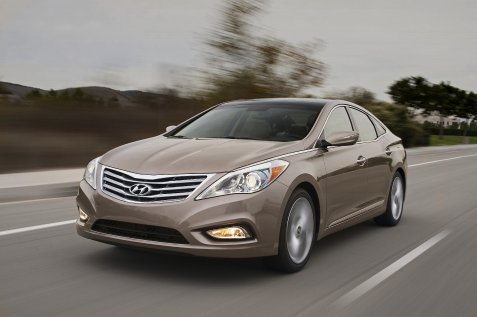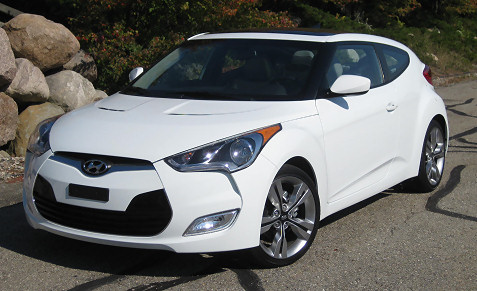First Drive: 2013 Hyundai Santa Fe
The folks at Hyundai are so proud of the new turbo engine in their all-new 2013 Santa Fe that they invited us to test drive the redesigned vehicle in the thin air around Park City Utah at 8,500 feet above sea level. The altitude provided a real test for the crossover’s performance and it passed with flying colors.
The third-generation Santa Fe comes in two versions, with a five-passenger Sport model that we tested along with a longer wheelbase seven-passenger model with three-rows. The Sport model arrives in showrooms in this month and the seven-passenger model will arrive in January 2013.
Exterior
Hyundai keeps putting out great-looking vehicles and the Santa Fe is no exception. With the new Santa Fe, Hyundai continues to implement its “Fluidic Sculpture” design principles that have given Hyundai vehicles a bold and distinctive look. Specifically, the Santa Fe features a new design concept called Storm Edge, which captures the strong and dynamic images created by nature during the formation of a storm. This design language works well on the new Santa Fe as you can see from the photos of the Sport model. The vehicle looks great from all angles. The seven-passenger version looks very similar, though some of the lines like the rear side windows are softened in the larger model.
Interior
The interior of the Santa Fe is very roomy and comfortable, and the model we drove was loaded with features, including a Panoramic sunroof, heated steering wheel, heated rear seats and manual rear side window sunshades, power driver seat with four-way lumbar control and front passenger seats, and sliding and reclining second row seating with 40:20:40 folding seat back. All of the controls were conveniently positioned and were easy to use. On the safety front, the Santa Fe has seven standard airbags, including driver’s knee airbag. I sat in the back seat and there’s plenty of room.
You definitely feel like you’re driving a crossover as you’re sitting a little higher than a car but not as high as an SUV. The overall driving experience will likely appeal to both drivers in a family with a nice blend of comfort and handling.
Performance
We had the opportunity to drive the 2.0L Turbo AWD version of the five-passenger Sport model through the mountain roads surrounding Park City. Performance of any vehicle declines in high altitude settings, but the power and performance of the Santa Fe turbos were very impressive. The Santa Fe easily accelerated as we climbed the mountain roads and handled the curves nicely. The overall handling was fine given that we pushed the vehicle pretty hard, so family buyers will be more than happy with the overall performance.
The Santa Fe Sport has two four-cylinder options, with the Theta II 2.4-liter Gasoline Direct Injection (GDI) engine that achieves 190 horsepower with an estimated 33 mpg EPA on the highway, which is the highest of any CUV/SUV equipped with an automatic transmission. We drove vehicles with the high-output Theta II 2.0-liter turbocharged GDI engine that achieves 264 horsepower with an estimated 31 mpg (FWD A/T) on the highway. A Lambda II 3.3-liter GDI V6 engine with 290 horsepower is available on the larger wheelbase Santa Fe.
Hyundai has emphasized weight savings across all of their new models in order to achieve the gas mileage numbers, and the new Santa Fe is 266 lbs. lighter than the 2012 model. The engineers accomplish this with the use of high tensile steel, as the new Santa Fe features a high tensile steel ratio of 37.7% vs. 7.8% for outgoing model along with improved torsional stiffness by 15.7%.
Overview
Like every automaker, Hyundai is eager to service the market of young families, and the Santa Fe is a huge key to their strategy of targeting what they call “core families.” Buyers in this segment are interest in practical vehicles but also want cool styling as well. Hyundai has achieved a nice mix of these aspects in the new Santa Fe with very competitive pricing, and we recommend adding this to your test drive list.
You can follow us on Twitter and Facebook for content updates. Also, sign up for our email list for weekly updates and check us out on Google+ as well.
Posted in: Cars
Tags: auto photos, auto slideshow, automobile photo gallery, autos, autos for guys, autos for men, car info for men, car photo gallery, car photos, car slideshow, crossovers, driving mountain roads, first drive, first drive automobile reviews, first drive car reviews, first drive reviews for guys, first drive reviews for men, hyundai, Hyundai Santa Fe, new automobiles, new autos, new cars, Park City Utah, Santa Fe, third generation Santa Fe















































